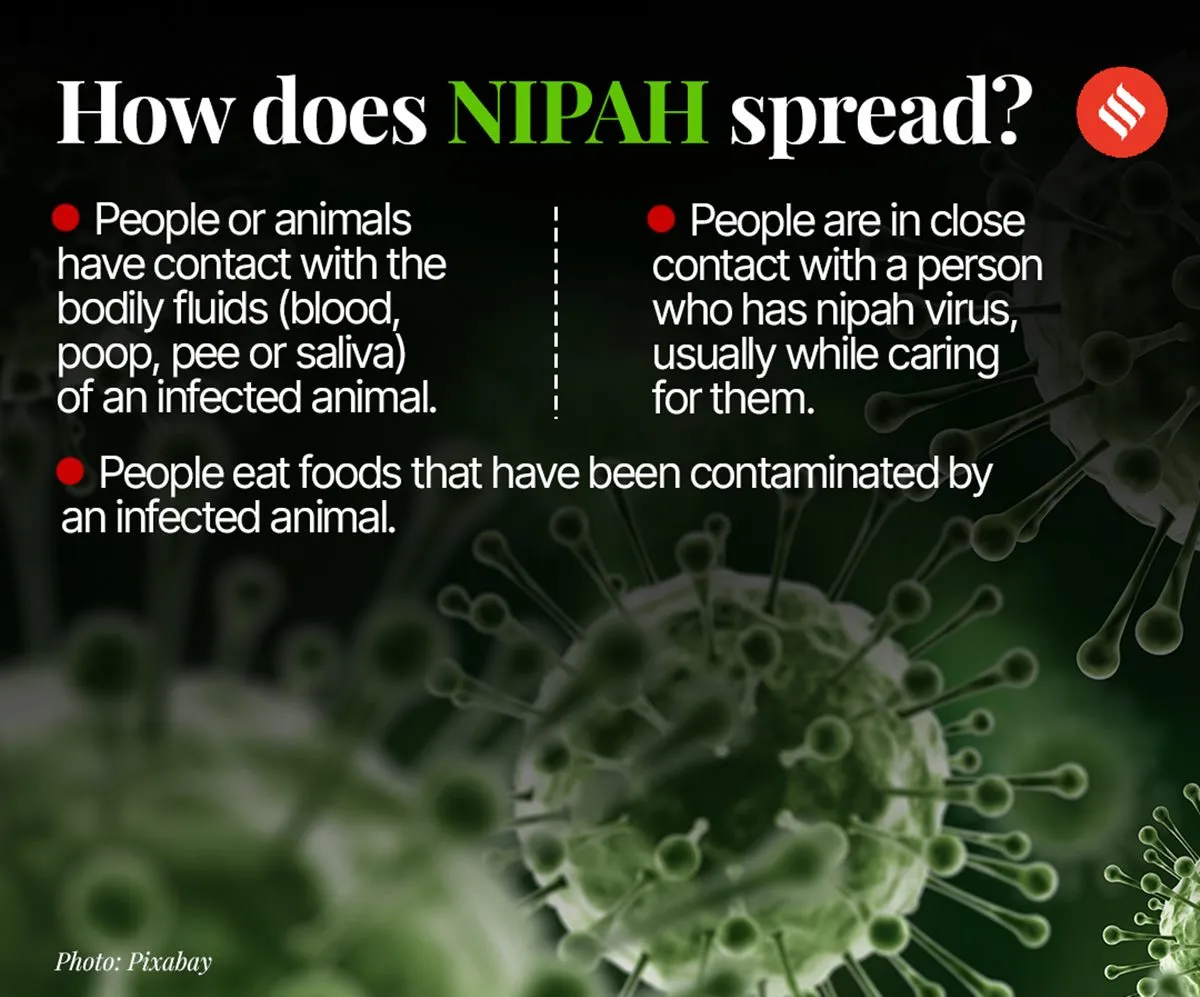Two deaths in Kerala’s Kozhikode district, suspected to be due to the dreaded Nipah virus, have led to the state sounding alarm bells. Doctors and health authorities have already collected samples and sent them to the National Institute of Virology (NIV) for confirmation.
If the samples are found positive for Nipah, these would be the first cases in the country in four years. The last case was reported in a 23-year-old student from Kerala in 2019. The outbreak was contained with just one case, with the student recovering from the illness. Genomic sequencing of the virus revealed that it similar to the one that caused the 2018 outbreak in the state that killed 17 of the 19 people who were infected.
Nipah is a viral infection that mainly affects animals such as bats, pigs, dogs, and horses. Being zoonotic, it can jump to humans who come in contact with the infected animals and cause serious disease.
What are signs and symptoms?
· It usually presents as fever and swelling of the brain called encephalitis.
· Headache.
· Breathing difficulties.
· Cough and sore throat.
· Diarrhoea.
· Vomiting.
· Muscle pain and severe weakness.
· In extreme cases, disorientation and seizures
Why have the two cases led to alarms ringing?
It is essential to detect the cases early and prevent further spread. This is because the Case Fatality Ratio — proportion of deaths among those who test positive for the infection – is very high for Nipah.
The CFRs in the 2001 and 2007 outbreaks in West Bengal were 68 per cent and 100 per cent respectively. In the case of the 2018 outbreak in Kerala, the CFR stood at 91 per cent with two of the infected persons surviving. To compare, the CFR of COVID-19 in India at present is around 1.2 per cent.
Is it a fast or slow moving virus?
However, the disease is not as transmissible as COVID-19 or influenza and is unlikely to cause a huge number of infections in a short time. “The previous history of infections and the nature of the virus indicate that it cannot spread as fast as influenza, COVID-19 or the very infectious measles,” says Dr E Sreekumar, director of the Institute of Advanced Virology-Thiruvananthapuram.
How does the disease spread?
Nipah can spread to humans after close contact with infected animals or secretions containing the virus on fruit trees, fruits, date palm sap, juice or toddy.
It can spread from human to human through close contact at home or in hospitals. It can spread from handling dead bodies of those with Nipah. “The infection is also known to spread through droplets in an enclosed, crowded environment. That is what happened in the 2018 Kerala outbreak. The infection spread from the index patient to others within a small corridor for radiological tests in the hospital. It cannot spread in open, well-ventilated spaces,” says Dr Sreekumar.
Although the basic mechanism of infection is known, the researchers have been trying to pinpoint the source of the jump from animals to humans in these cases. Knowing the origin can help them understand better the ways of preventing future outbreaks.
Dr Sreekumar says that in the case of the 2018 outbreak, the source could not be pin-pointed, although it was suspected to be a fruit contaminated by bats. Secretion from contaminated fruit bats on trees and fruits has been linked to cases in Bangladesh.
What can we do to protect ourselves?
Dr Sreekumar says that the cases, if confirmed, will still indicate a local outbreak. This means, people from therest of the country are not at risk of the infection at present. “People in the area where the cases were detected should refrain from coming in close contact with the family members and other contacts of the two index cases,” he adds.
During the previous outbreaks, the government also suggested precautions like thoroughly washing the fruits and peeling them before consumption. Fruits with signs of bat bites should be discarded. And palm sap or juice should be boiled before consumption.
How would the government manage the outbreak?
While the samples of the two patients have been sent to NIV for confirmation, the local government has already started contact tracing. Those who came in close contact with the two cases are being quarantined. This is done for any infectious disease outbreak. The contacts will be monitored for symptoms of the infection. And, at the same time, the teams will start to look for the source of the infection moving from animals to humans. “We will come to know much more when we get a complete history of the two cases to understand how they likely got the infection,” says Dr Sreekumar.
How does nipah spread? (Designed by Abhishek Mitra)
How is nipah virus diagnosed?
A real-time polymerase chain reaction (RT-PCR) test can confirm nipah virus through nasal or throat swabs, cerebrospinal fluid (CSF), urine and blood samples. Doctors can diagnose the infection in its later stages or after recovery by testing your blood for certain antibodies through the ELISA test.
How is nipah virus treated?
There are no antivirals and there is only symptomatic management. Options are drinking water, resting, using medication to control nausea or vomitting, inhalers and nebulisers for breathing and anti-seizure medication in extreme cases are the present options. Researchers are studying using monoclonal antibody treatment.
Is there a cure for nipah virus?
Most Read
There’s no vaccine or medications to cure nipah virus.
What is its geography?
Outbreaks of nipah are not very common in India unlike neighbouring Bangladesh that sees cases almost every year since the first case in 2001. Nipah has taken the form of a seasonal disease in Bangladesh, with people getting the infection between December and May.
There have been four separate outbreaks in India so far, with the first cases reported in 2001 from West Bengal that neighbours Bangladesh. Once infected, the odds of death with Nipah are very high.






